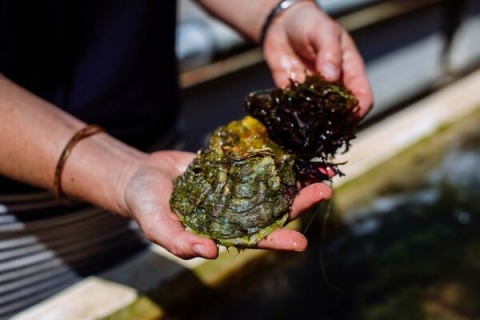

Researchers hope the initiative will help tackle biodiversity loss in coastal regions and mitigate the effects of climate change.
20 January 2023
3 min read
A project that brings together marine scientists and business leaders to help improve the health of the UK coastline starts this week. Researchers hope the initiative will help tackle biodiversity loss in coastal regions and mitigate the effects of climate change.
The Solent to Sussex Bay Seascape Restoration project will build on the pioneering restoration projects occurring across the region to unlock the barriers to upscaling seascape restoration by uniting science and business communities on the South Coast of England, and eventually nationally.
Seascape restoration is a nature-based solution to tackle biodiversity loss, boost carbon take up, and enhance economic and community values in seagrass, saltmarsh, kelp, and oyster habitats. To unlock these benefits, the finance and coastal restoration communities require urgent support to understand barriers to sustainable financing and opportunities to scale-up and sustain restoration activities.
At the moment, there are many restoration projects with lots of people working on them. Our aim is to bring them all together and create a community.
Professor Steve Fletcher, Professor of Ocean Policy and Economy
Professor Steve Fletcher from the University of Portsmouth is leading the research, he says: “We propose to examine the practical opportunities to better integrate biodiversity and finance within seascape restoration activities. There is huge investment potential in seascape restoration.
"The problem is that the scientific community doesn’t always understand the business community and vice versa – so there is a potential blockage. This project will find out what the barriers are and help both communities overcome them.”
The research is split into two stages. The first stage will establish a detailed test case in the Solent to Sussex Bay area (Hampshire and Sussex). This area has the most operational and planned seascape restoration projects in the UK. Researchers will work with the science and business communities to build understanding and confidence between the two groups and ultimately identify the blockages that inhibit cohesive working relationships.
Secondly, researchers will initiate national conversations that build on the Solent to Sussex Bay test case findings to explore national opportunities for seascape restoration.
Professor Fletcher explains: “At the moment, there are many restoration projects with lots of people working on them. Our aim is to bring them all together and create a community.
“The regulations applied to restoration activities can also be problematic, particularly when you look across a big area where you might have national, regional and county boundaries – all with different jurisdictions of law and policy. These variations can cause friction and create blockages. We hope to bring finance, biodiversity and regulation stakeholders together and unblock opportunities for better seascape restoration. Which will ultimately help in the fight against climate change.”
This seascape restoration network brings together a powerful community of researchers, practitioners and stakeholders that have been pioneering restoration across different habitats and areas,
Dr Joanne Preston, Reader in Marine Ecology and Evolution
Dr Joanne Preston - Reader in Marine Ecology and Evolution, University of Portsmouth, says: "This seascape restoration network brings together a powerful community of researchers, practitioners and stakeholders that have been pioneering restoration across different habitats and areas, with the aim to remove barriers to scaling up restoration and create a truly seascape approach - harnessing the benefits that come from restoration of multiple habitats at scale".
The Solent to Sussex Bay Seascape Restoration is a twelve-month project funded by NERC (National Environment Research Council) – it has the following timelines:
- Activity 1. Solent to Sussex Bay Seascape Restoration Network set-up and investigation into the main blockages. Months 1-3.
- Activity 2. Through workshops and interviews explore gaps and identify opportunities to integrate finance and biodiversity into seascape restoration. Months 3-9.
- Activity 3. National multi-stakeholder dialogues to integrate biodiversity and finance within seascape restoration and development of a unified UK-wide strategy for future seascape restoration projects. Months 6-12.
The projects that this network brings together include:
- Solent Seascape Project
- Zoological Society of London (ZSL) / University of Portsmouth Seascape symposium
- Solent Oyster project and handbook
- Help our Kelp project
- Seagrass restoration and handbook
